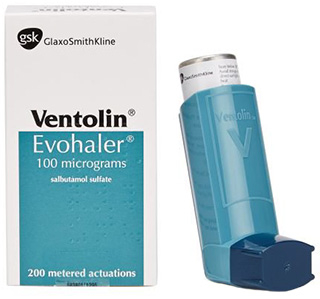

Ventolin Inhalator: Comprehensive Guide
Ventolin Inhalator contains the active ingredient albuterol, a bronchodilator medication used to treat conditions such as asthma, chronic obstructive pulmonary disease (COPD), and obstructive bronchopulmonary disease. It works by relaxing the muscles in the airways, making it easier to breathe.
DIRECTIONS
Use Ventolin Inhalator as directed by your healthcare provider. Shake the inhaler well before each use. Breathe out fully, place the mouthpiece in your mouth, and inhale deeply while pressing down on the canister to release a puff of medication. Hold your breath for a few seconds, then exhale slowly. Wait at least one minute between inhalations if taking multiple doses.
PRECAUTIONS
Before using Ventolin Inhalator, inform your doctor about any medical conditions you have, especially heart problems, high blood pressure, diabetes, or hyperthyroidism. Also, disclose any medications you are currently taking, including prescription drugs, over-the-counter medicines, and herbal supplements, as they may interact with Ventolin.
CONTRAINDICATIONS
Do not use Ventolin Inhalator if you are allergic to albuterol or any other ingredients in the medication. It is contraindicated in patients with a history of hypersensitivity to sympathomimetic drugs or with a known sensitivity to any component of the product.
POSSIBLE SIDE EFFECTS
Common side effects of Ventolin Inhalator may include headache, dizziness, nervousness, tremor, palpitations, and increased heart rate. Contact your doctor if you experience any persistent or severe side effects.
DRUG INTERACTIONS
Ventolin Inhalator may interact with certain medications, including beta-blockers, diuretics, and monoamine oxidase inhibitors (MAOIs). These interactions can affect the effectiveness of Ventolin or increase the risk of side effects. Inform your doctor about all the medications you are taking to avoid potential interactions.
MISSED DOSE
If you miss a dose of Ventolin Inhalator, take it as soon as you remember. However, if it is almost time for your next dose, skip the missed dose and resume your regular dosing schedule. Do not double the dose to catch up.
OVERDOSE
Seek immediate medical attention if you suspect an overdose of Ventolin Inhalator. Overdose symptoms may include chest pain, irregular heartbeat, seizures, and fainting.
STORAGE
Store Ventolin Inhalator at room temperature away from moisture and heat. Keep the inhaler out of reach of children and pets. Do not store in the bathroom.
Description of its Role in the Treatment of Asthma, Chronic Obstructive Pulmonary Disease (COPD), and Obstructive Bronchopulmonary Disease
Ventolin Inhalator plays a vital role in the treatment of asthma, COPD, and obstructive bronchopulmonary disease by providing rapid relief of bronchospasm and improving airflow obstruction. Albuterol, the active ingredient in Ventolin Inhalator, acts as a bronchodilator, relaxing the muscles in the airways and allowing for easier breathing. It is commonly used as a rescue medication during asthma attacks or COPD exacerbations, providing quick relief of symptoms such as wheezing, coughing, and shortness of breath. Additionally, Ventolin Inhalator may be used as a preventive measure before exercise-induced bronchospasm in individuals with asthma. However, it is essential to note that Ventolin Inhalator is not a maintenance medication and should not be used as a sole treatment for asthma or COPD. Patients should follow their prescribed treatment plan, which may include other medications, such as corticosteroids or long-acting bronchodilators, as well as lifestyle modifications and regular monitoring by a healthcare provider, to effectively manage these chronic respiratory conditions.
